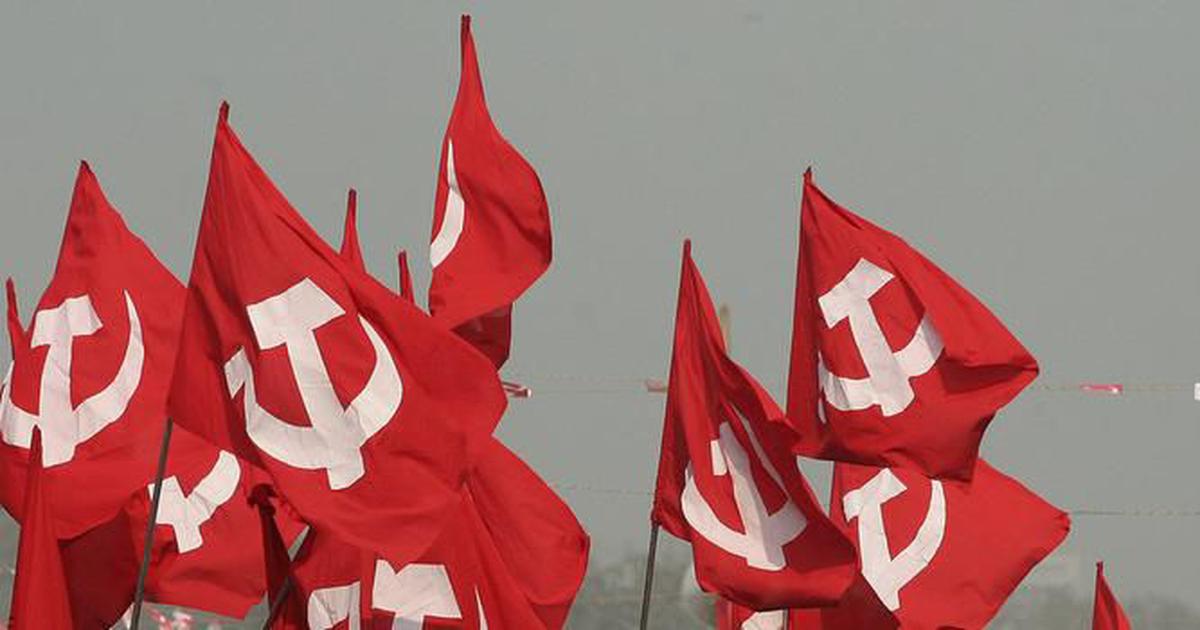The 1857 rebellion is often described as India’s first war of Independence. Scholars view it from different perspectives. Right-wing Hindu scholars, as well as some Muslim scholars, see it as a battle to free India from British rule. Scholars with left leanings also agree with them. They see it as a popular uprising against the British. However the Dalit thinkers see it as a crusade launched by the Hindus and the Muslims, especially the Brahmins and the feudal lords, to save their religion from the clutch of social reforms being initiated by the British rulers. And deception was used to make the common people join the revolt.
The Brahmins were so enamoured of their religious system that they believed that it was beyond reproach and did not require any change. The brahmanical religion remained unscathed even during the 800 years of Muslim rule. The Muslim rulers refrained from meddling in the religious affairs of the Hindus – the reason they could rule for 800 years. But for the advent of the British, India would have been under the Muslim rule even today. And one may well ask why no war of independence was fought against the Muslim empire?
It is the intellectual class that lends leadership and momentum to any movement. Unfortunately, the intellectual class that led Indian society was predominantly Brahmin. The Muslim rulers gave all the freedom to the Brahmins and extended every possible privilege and facility to them. But the East India Company did not continue with this policy. It interfered with the religious system and initiated many reforms in the Hindu social order. That was why it had to face a revolt by the Brahmins. In other words, the social-reform agenda of the British led to the movement against them. At least, two major revolts in India were triggered by the social reforms: the Sepoy Mutiny of 1806 in Vellore and the Sepoy Mutiny of 1857. Dr Ambedkar has written that while the Vellore mutiny of 1806 was a small spark, the mutiny of 1857 had turned into a major fire (Dr Babasaheb Ambedkar: Writings and Speeches, Volume 12, Page 140).
The sole reason for the mutiny of Vellore was the order issued by the chief commander of the Madras Army, John Craddock, discontinuing the dress code based on religious and caste identities of the soldiers. They were not allowed to wear turbans or finger rings or sport beards. Instead, he introduced a new uniform cap for all.
The soldiers considered the move as an attempt to convert them into Christianity. The Hindus thought that the new cap was made of cow hide while the Muslims saw the ban on the beard as an interference in their religious practice. The sepoys of both the faiths revolted to preserve their religious customs. Tipu Sultan’s family, housed in the fort of Vellore, aided the revolt.
Brahmin scholars have glorified this mutiny as the first independence struggle against British rule. They have gone to the extent of saying that this event paved the way for the revolt of 1857 ( see A. Rangarajan’s essay “When the Vellore Sepoys Rebelled” published in The Hindu, Sunday Magazine, 6 August 2006).
Was it really a freedom struggle? If it was indeed a freedom movement against the East India Company, why did the soldiers join the Company’s army in the first place? Secondly, why did they revolt only after the new order on the uniform was issued? From the foregoing, it can be inferred that the rebellion was not against the East India Company; it was against the regulation that abolished the religious and caste identities of the soldiers. Had it not issued the order, there wouldn’t have been any revolt. Then, on what basis was this revolt a struggle for independence? It was not an attempt to end the Company’s rule. It was a religious, caste struggle. In that case, we should call it a religious movement and not India’s first struggle for independence.
Sepoy Mangal Pandey is credited with launching the revolt of 1857. He was a conservative Brahmin who believed in untouchability. Matadeen was a sweeper in the barracks where Mangal Pandey was stationed. Once, while sweeping the floor, Matadeen touched Pandey’s pot accidently. Feeling insulted, the Brahmin sepoy abused and humiliated the sweeper. A fuming Matadeen retorted: “You claim to have become impure by my touching your pot, but you don’t lose your purity when you use your teeth to open the cartridges that are lined with the fat of cows and pigs.” Pandey came to believe that all Hindu sepoys had become impure. This incident was the trigger for the Sepoy Mutiny.
Was it the only reason behind the revolt? It couldn’t have been, because all the soldiers knew that the cartridges were lined with animal fat, although they may not have known the specific animal that the fat came from. Mangal Pandey was a vegetarian and touching animal fat of any kind was taboo for him. Then, why did he start a revolt on the use of cow fat alone? It should also be borne in mind that the soldiers went on to use the same cartridges against the army of the East India Company during the rebellion. How did they open the cartridge then? The real issue was perhaps not the animal fat, but something else.
Cow and pig are associated with the religion of the Hindus and the Muslims, respectively. Hindus regard the cow as a mother and worship it. The Muslims detest the pig as a filthy animal, and it is “haram” (or forbidden) for them to even touch, let alone consume, it. The communal forces use these animals to start riots between the Hindus and the Muslims.
In 1857, the brahmanical forces employed these animals to start a riot against the British. They found in cow fat a handy weapon in this holy war. They used the pig to woo the Muslims so that they too would join them. It is quite possible that Matadeen was a messenger of the Brahmins.
The issue that the discussion on the Vellore revolt threw up may be relevant here, too. Brahmin scholars, such as Savarkar and Har Dayal, who termed the 1857 mutiny as the first war of independence, didn’t care to consider whether there would have been a revolt had the fat of cow or pig not been used in cartridges or had it been used and the soldiers never came to know of it. If the main reason was indeed animal fat, it is evident that there wouldn’t have been a revolt. Then on what basis can it be called a war of independence?
In fact, the revolt was started to protect a religious system. It was an issue of freedom of the Hindu religion, and it had nothing to do with the freedom of the country. Some conservative Brahmins, and a few kings and nawabs whose kingdoms were vulnerable to the British Raj, had planned this revolt.

Let’s discuss the basic reasons for the 1857 Sepoy Mutiny. The Bengal Army started the revolt. It was a Bengal Army in name only. It had no Bengali soldiers. The army consisted of the sepoys mainly drawn from the upper castes of Awadh and Doaba region. The Brahmins dominated the army. They were communal and casteist. Therefore, this army became easy prey to the Brahmin conspiracy.
The Brahmins of Awadh and Benaras were outraged by the rules and regulations introduced by the British for social reforms. They wanted the British rulers, like the Mughals, to not interfere in their religious affairs. But the British rulers found some of the interventions necessary
Dr Ambedkar has written about some of these social reforms (Dr Babasaheb Ambedkar: Writings and Speeches, Volume 12, pp 115-137). He observes that all social ills are based on religion. A Hindu man or woman does everything according to his or her religion. He eats, drinks, bathes and wears clothes, as dictated by his religion. His religion determines his birth, marriage and cremation. Consequently, a social ill, which may appear as a sin from a secular point of view, is not a sin for him because his religion terms it a virtue. So, a sinful Hindu retorts, “If I sin, I am sinning religiously.” (ibid, p 115)
A society is always conservative. It changes only when it comes under pressure to change. Whenever pressure is exerted, a struggle between the new and the old order ensues. Therefore, any social evil, especially one that is based on religion, can never be eradicated without the help of the law.
In order to put a stop to the social ills, the East India Company considered it necessary to enact five laws (ibid, pp 115-132). All these laws were enacted before the mutiny of 1857. The sixth law was introduced after the mutiny, in 1860, under the section 375 of the Penal Code to curb sexual harassment and rape of women. The five laws introduced before the mutiny were as follows:
- Bengal Regulation Act, 1795 – to stop the “koorha” tradition among the Brahmins in Benaras province, in which women were killed by the men of the family. Until then, capital punishment didn’t apply to the Brahmins. For the first time, the Brahmins were brought within the purview of the death penalty.
- Regulation Act 1802 – to stop the sacrifice of children in the name of religion.
- Regulation Act 1829 – to end the Sati tradition. This tradition required women to be burnt to death in the pyre of her dead husband.
- Caste Abolition Act 1850 – which was an extension of Section 9 of the Regulation Act 1832. It was put in place to stop the practice of untouchability.
- Hindu Widow Remarriage Act 1856 – to legalize remarriage of Hindu widows.
It is clear that these rules interfered with the religious practices of the Brahmins. For the first time, a Brahmin, who was exempt from capital punishment, could face death himself after being found guilty of murder. It was more disturbing to the Brahmins of Benaras, who did not hesitate to kill a girl or a woman as part of the “koorha” tradition. This was the spark that ignited the revolt.
These laws aimed at social reform sparked the revolt by the Bengal Army in 1857. Lord Dalhousie’s Doctrine of Lapse (the policy of annexing a state if the ruler was deemed incompetent or died without a natural heir) also contributed to the trigger. The states of Satara, Jaitpur, Sambalpur, Baghat, Udaipur, Jhansi and Nagpur were brought under Company rule. The existence of certain other states was also in danger. Even the Mughal Emperor Bahadur Shah Jafar was afraid and could not decide whether to support the British or to oppose them.
Let us take the example of Jhansi, as its role in the revolt is well known. It was a dependency of the Peshwa. Its ruler, Gangadhar, was a tyrant. He didn’t have a son, so he adopted his nephew and wanted to declare the nephew his heir apparent. But the Company didn’t let him. Even though his ancestors had always been loyal, the Company declared Jhansi a part of its territory by offering a pension of Rs 5,000 to the queen. She refused the compensation and declared, “I will never give away my Jhansi.” She fought the British to save her kingdom.
All these rulers wanted to regain their kingdoms. This is why they joined the Brahmins in the revolt.
At this juncture we should pose a question – was it a freedom struggle? If so, had the concept of “Akhanda Swaraj” or “undivided India” taken shape – in an India that was still divided into hundreds of kingdoms? The answer is a resounding no. The Hindu concept of Swaraj took shape only after the year 1900. The vision of complete independence did not exist till the Round Table Conference of 1930. Gandhi and other Congress leaders were still demanding dominion status for India.
If this was the state of affairs in the 20th century, does it make any sense to treat the 1857 revolt as a struggle for independence? It was foolish talk of those fools who wanted freedom for the Hindus alone. It did not bother them that, had the revolt succeeded by ill luck, the princely kingdoms would have perpetuated the system that had denied the Untouchables their basic human rights. The widows would have been burnt; innocent children would have been sacrificed. Feudal lords would have had the girls and women kidnapped and raped. All kinds of violence and brutality of the Brahmins would have been pardonable. Neither would there have been a single, uniform law nor would everyone have been treated as equal before the law.
The Brahmin scholars who called the 1857 mutiny the first freedom struggle and dreamt of an “Akhand Hindu Bharat” or “undivided hindu India” were blind to the fact that the revolutionary work of uniting India was actually being carried out by the British.
As the saying goes, patience pays off. There have been millions of the downtrodden, Dalits, Backwards, Tribals and labourers. Why shouldn’t there have been a turnaround in their fortune after thousands of years of oppression? Though the Brahmins and the kings wanted the revolt to succeed so that they could re-establish the feudal-religious system, destiny favoured the millions of Bahujan.
The revolt could not become pan-India. It was limited to Delhi, Lucknow, Allahabad, Kanpur, Benaras, Jhansi, Gwalior and some parts of Bihar. It was crushed soon after. The soldiers of Bombay and Madras did not participate in the mutiny; rather they helped to crush it. The armies of these two southern provinces consisted mainly of the people from the Untouchable castes. Men from Mahar and Paraiyar castes dominated the armies of Bombay and Madras, respectively. They did not join the revolt of the Brahmins. The mutiny that started in March 1857 came to an end in July the same year. The country bade farewell to a dictatorship and commenced its journey on the path to becoming a democracy.
(Translated from the original Hindi by Amrish Herdenia)





